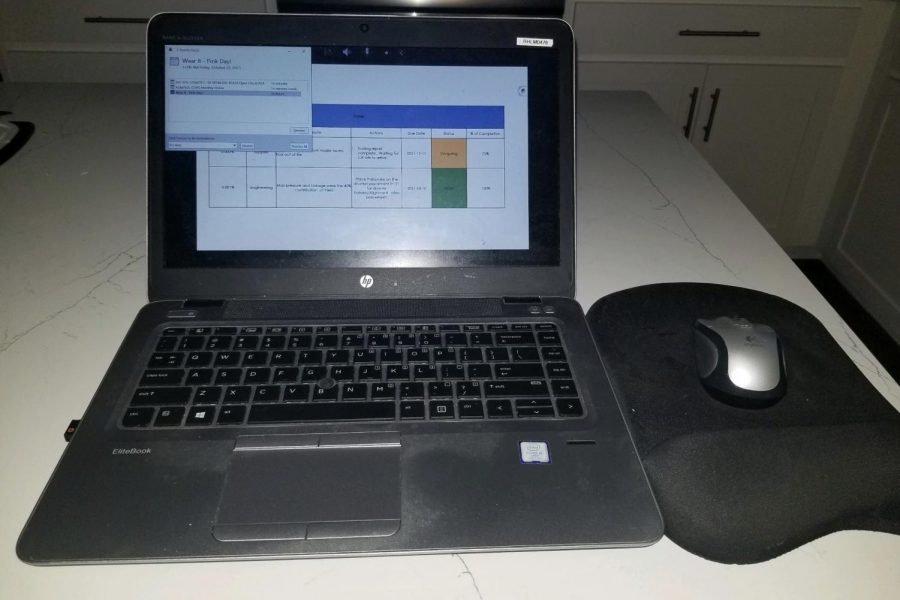Working from home has impacted society
PHOTO Bree Soule
October 27, 2021
Since COVID-19 became a widespread issue, the working class has been affected majorly when it comes to where they work. Prior to COVID-19, approximately 20 percent of American workers were working from home— during COVID-19 closures, approximately 71 percent were working from home (WFH), according to a study by the Pew Research Center.
“[WFH] has been a part of my world for a while even before the pandemic on some level,” FHS parent Kevin Price said. “But as we shifted to full time WFH for 18 months, you have to make additional adjustments. Personally, I don’t need all of the social interaction or comradery that comes with being in an office around others. Is it all perfect? No. I will find that there are days that I might go a bit ‘stir’ crazy being home alone all day long, but the majority of the time I enjoy the distraction-free time.”
There have been numerous benefits listed on the effects of working from home (WFH). The National Center for Biotechnology Information (NCBI) reported, “WFH saves daily commuting time and offers more flexibility for workers to take care of their families. WFH allows employees to choose to work at times when they are most productive, and can be beneficial for avoiding distractions from coworkers, especially in open plan offices.”
“For me I found that it had an overall positive impact,” Price said. “It reduced my stress levels from dealing with traffic driving into Detroit where my office is. In turn, it reduced costs for the family without having to pay for gas. It also reduced wear and tear on the vehicle and less chance of me buying food I probably shouldn’t be eating. An additional impact was seeing the family more.”
Other benefits listed by Price include breaks whenever, reduced office distractions and more time with the “furbaby.”
WFH also has been linked to disadvantages including mental issues, social isolation and depression. NCBI states that “Blurred work-life boundaries can make it difficult to detach mentally from work which can increase stress and anxiety.”
Balancing work-life with home-life may become an issue for some people, as well as the ability to do household chores or errands during work hours.
“It’s easy to get into a routine or a situation of taking too many breaks, or the desire to turn on the TV or get into a mode of just working,” Price said. “You can also get more distractions from home. Just like in the office, distractions go both ways whether at home or not. You need to set yourself up for success in a separate space if you can.”
When WFH, one tip for success is to get in a work routine and set up an area dedicated to work. Setting up a work space away from family may also decrease home-life distractions.
“You have to learn to be an organized person in order to really thrive WFH,” Price said. “You need to make sure you set yourself up for success whether it is technology or the environment you’re working in. You need to be diligent about taking time during the day to get outside and or go for a walk. It’s very easy to get into a ‘rut’. Set a routine that helps you distinguish between ‘home’ and ‘work’ so you can transition daily into that mode and leave it in your office. I have many co-workers that have struggled with this during the past 18 months. Ultimately, you will only be as successful as you make it.”
With WFH continuing for the foreseeable future, each business has its own rules and regulations. Certain businesses have intentions to bring their employees back to the office after the pandemic while other businesses have shifted permanently to a WFH model.










